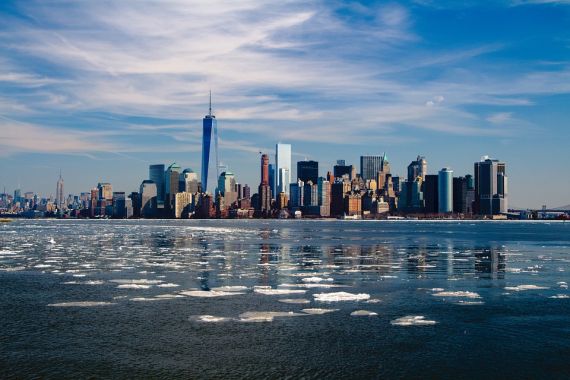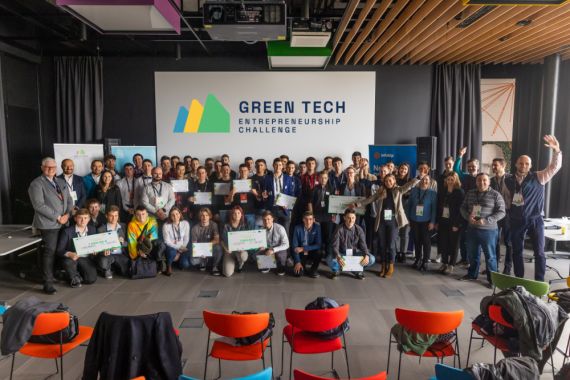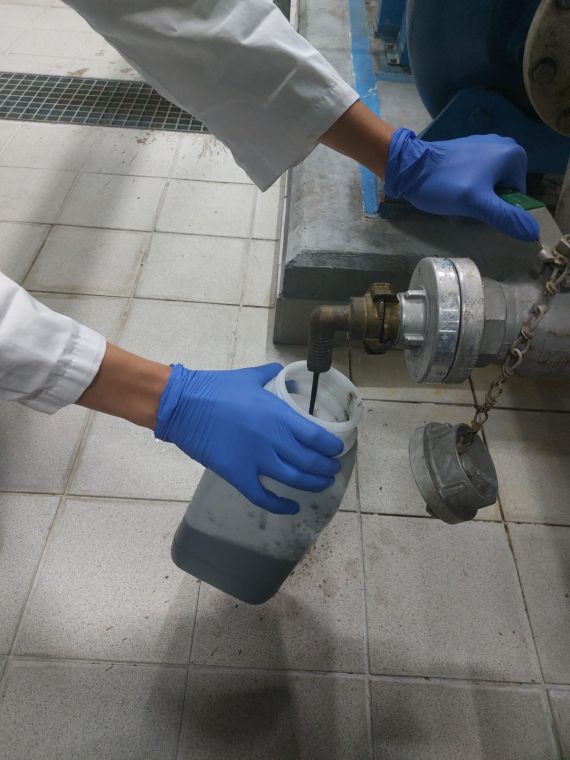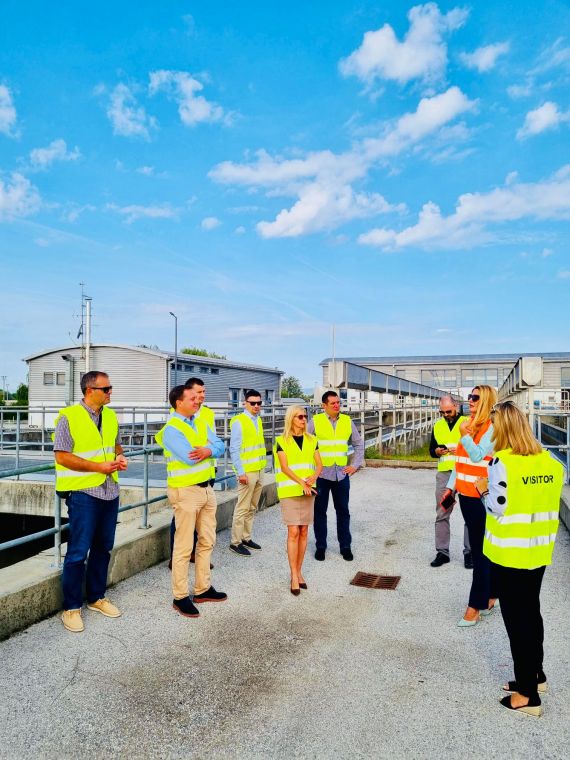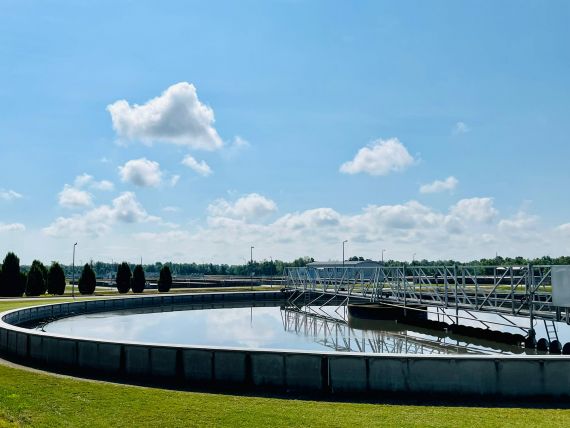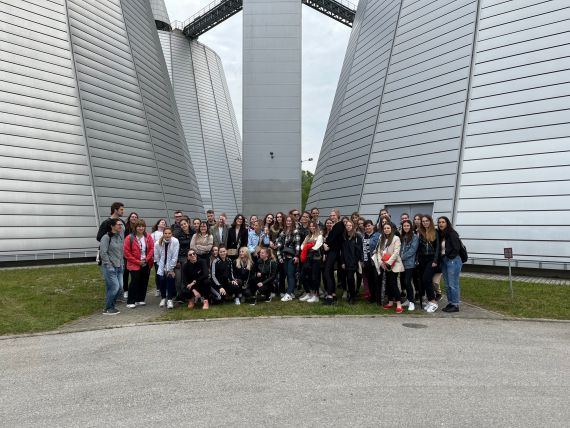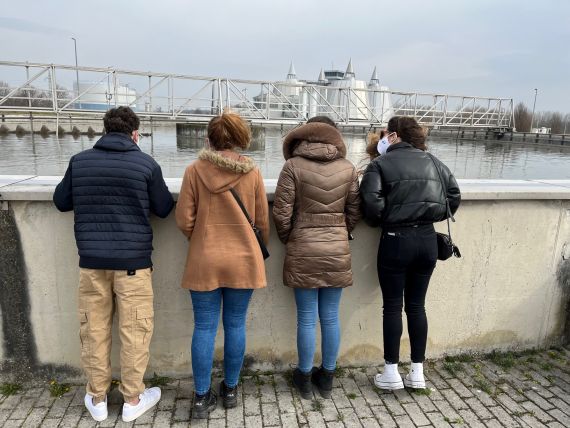Published: 4.2.2022.
The article was edited and published by Andrea Božić
Microbiologist M.Trujillo, filtered bacteria from a wastewater sample containing coronavirus in traces and discovered something completely new
Last January, a team of researchers searching for coronavirus in New York City wastewater noticed something strange in their samples. The virus fragments they found had a unique constellation of mutations that had never been reported in human patients before - a potential sign of a new, hitherto undiscovered variant.
For the past year, these unusual sequences, or what scientists call “cryptic lineages,” have continued to appear in the city's wastewater.
There is no evidence that the lineages, which have been circulating for at least a year without overtaking the Delta or Omicron, pose an increased health risk to humans. But the researchers, whose findings were published in Nature Communications on Thursday, still have no idea where they came from.
“At this point, what we can say is that we have not found the cryptic lineages in human databases, in spite of looking everywhere,” said Monica Trujillo, a microbiologist at Queensborough Community College and the author of the new paper.
Researchers themselves are worried about the origin of the lineages. Some tend to explain that the virus comes from people whose infections have not been detected by sequencing. Others suspect the lineages may have originated from infected animals, presumably from the city's huge rat population. Even then, a favorite theory can change from day to day or from hour to hour.
The answers escape us for now!
Researchers - including Marc Johnson, a virologist at the University of Missouri, David Smyth, a microbiologist at the Texas A&M University and others - have been sampling wastewater from 14 New York City treatment plants since June 2020. In January 2021, they started conducting targeted sample sequencing, focusing on the part of the gene for the most important protein of the virus.
Although this approach provides a limited view of the viral genome, it allows researchers to obtain a multitude of data from wastewater, in which the virus is usually fragmented.
Fragments of the virus containing new mutation patterns have appeared on several occasions at various treatment plants, the researchers found. (They could not reveal the specific plants or areas of the city, they said.)
“To date, we have not seen these variants among clinical patients in New York,” said Michael Lanza, the spokesman for the New York City Department of Health and Mental Hygiene.
Researchers at the University of California, Berkeley, found similar sequences in a California sewer, said Rose Kantor, a microbiologist at the university.
The scientists' ongoing quest to understand where the sequences come from highlights both the potential of wastewater monitoring, which can help scientists monitor how the virus develops, and the challenge of making sense of any anomalies brought to the light of day.
“We’ve really struggled trying to understand what we have,” said Dr. Trujillo.
The lineages could be coming from people whose infections have not been detected or whose virus has not been sequenced.
However, the fact that they kept appearing in the same few wastewater plants makes this theory less likely, the researchers said, given that New Yorkers, and all the variants they could be carrying, move around the city without any restrictions.
Still, Dr. Dennehy speculated that the sequences could come from people confined to long-term health care facilities in only several parts of the city. But he failed to prove it.
“We were able to narrow it down to a very small sewerage area,” Dr. Dennehy said. "And although I emailed doctors and hospitals in those areas and I never got a single reply to my emails."
Indeed, people who have a compromised immune system may have more difficulty fighting the virus, giving it more opportunities to mutate. Many scientists theorize that Omicron originated from an immunocompromised patient.
Interestingly, some of the cryptic lineages have some of the same mutations as Omicron, or mutations in the same places. Laboratory experiments suggest that these lineages could also be avoiding some antibodies.
New York lineages could be the result of the same kind of selective pressure to avoid some of the body’s immune defenses, researchers theorize.
Animal origin?
"To discover something in the sewer, you need a lot of things," said Dr. Adam Lauring, a virologist at the University of Michigan who did not participate in the research.
Dr. Johnson, a Missouri virologist, agrees. He supports the hypothesis that the sequences are coming from animals, perhaps several specific populations with limited territories. In May and June 2021, when the number of human Covid-19 cases in the city was low, mysterious lineages accounted for a higher proportion of viral RNA in wastewater, suggesting they may have a non-human origin.
Researchers initially considered a diverse range of potential hosts, from squirrels to ferrets. “This is a very promiscuous virus,” Dr. Johnson said. "It can infect all kinds of species."
To narrow down the options, they returned to the wastewater, assuming that any animal that was shedding the virus could also be leaving its own genetic material behind.
Although the vast majority of the genetic material in the water came from humans, small quantities of RNA from dogs, cats and rats were also detected, the scientists discovered.
Dr. Johnson was considering rats, millions of which roam the city. In his lab, he created pseudoviruses - harmless viruses that do not replicate - with the same mutations present in cryptic sequences. The pseudoviruses managed to infect mouse and rat cells, he found. The original version of the virus does not appear to be able to infect rodents, although some other variants, such as Beta, can.
“So, in and of itself, it’s not an important piece of information, but it is at least consistent with the idea that it's coming from rodents,” said Dr. Johnson.
Since last summer, scientists have been collaborating with the U.S. Department of Agriculture's Animal and Plant Health Inspection Service to look for signs of the virus in blood and feces samples from local rats. So far they have been empty. “Maybe we’re not targeting the right animals,” Dr. Dennehy said.
Or maybe rats are not the source of the mysterious lineages. Scientists have repeatedly found that humans can transmit the virus to animals, especially pets, zoo animals, farmed martens and others with which they come into frequent contact. This has raised concerns that the virus might establish itself in an animal reservoir, where it could mutate and be transmitted back to humans.
However, rats have not usually been high on the list of concerns and there is no evidence that the virus is circulating among wild rats. The route by which humans could have infected rats is also unknown.
“Nothing makes perfect sense,” Dr. Johnson said.
But some kind of animal origin remains a possibility, scientists maintain.
“It’s just as convincing, if not even more convincing, than human origin,” said Dr. Lauring.
So the search continues. Dr. Johnson has developed a new technique capable of amplifying only sequences other than Omicron, which should make it easier to detect lineages. He has also began looking for similar lineages in sewage samples from other states, which could help find further clues about their origins. “We will know eventually,” Dr. Johnson said, hoping to soon discover the true origins of the lineage.
Prepared by: Astrid Werbolle
Source: The New York Times
https://www.google.com/url?sa=t&rct=j&q=&esrc=s&source=newssearch&cd=&cad=rja&uact=8&ved=2ahUKEwiwjem55eX1AhVGgP0HHezMDcEQxfQBKAB6BAgHEAI&url=https%3A%2F%2Fwww.nytimes.com%2F2022%2F02%2F03%2Fhealth%2Fcoronavirus-wastewater-new-york.html&usg=AOvVaw2jlSalWxgBwpZjI4GwsYcq

